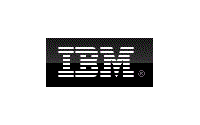XSEDE, which is a National Science Foundation-supported project that brings together 17 supercomputers, visualization and data analysis engines, and data storage resources, has migrated and upgraded its network backbone infrastructure to the Internet2 Network.
This enables XSEDE to use Internet2’s new 100 GbE optical network, platform, services and technologies.
Internet2 and the XSEDEnet networking group will work together to configure a private network between the XSEDE service provider sites across the shared backbone. A majority of sites will connect to the nearest Internet2 Advanced Layer 2 Service node at 10G and share bandwidth across a 100G backbone with other participants. Initially, Indiana University and Purdue University will have 100G connections.
"This is an extremely important milestone that advances the strategic alignment between the high performance computing and Internet2 communities," said Indiana University President Michael A. McRobbie. "Having the massive computational capabilities of XSEDE coupled directly to the most advanced network capabilities with the broadest reach among the U.S. and global research communities is of critical importance to the success of XSEDE."
https://www.xsede.org/

















